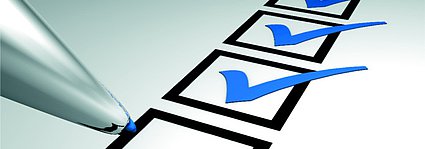Dear Madam or Sir!
As of 2021-05-26, Directive 93/42/EEC on medical devices (hereinafter MDD) was withdrawn and thus became invalid. Consequently, according to Article 120 (1) of Regulation (EU) 2017/745 on medical devices (hereinafter MDR), the designation of all Notified Bodies according to MDD and also our designation was withdrawn.
This means on the one hand that we as your Notified Body according to MDD can no longer issue new certificates or extensions of certificates. The validity of previously issued certificates will continue to exist if they are subject to appropriate monitoring by the Notified Body in accordance with Article 120 (3) MDR, last sentence.
This situation also means that an essential part of the certification contract has ceased to exist, as mdc is no longer a Notified Body according to MDD. (The designations as Notified Body according to MDR as well as IVDD are unaffected and remain in place!) Therefore, we will approach you in the next few days with a supplementary agreement to the existing certification contract in order to enable the monitoring required by Article 120 (3) MDR on a contractually sound basis. This is an essential prerequisite for the continued validity of the issued certificates according to MDD.
Furthermore, we would like to inform you about new MDCG guidance documents. The MDCG Guidance Documents provide assistance for the harmonized interpretation of the legal text of the MDR by the European Commission and National Competent Authorities. MDCG guidance documents should be taken into account when implementing a QM system and when creating and maintaining technical documentation.
With 2021-10-21 MDCG 2021-25[1] on the handling of legacy devices was published. Legacy devices are defined as products that are certified according to the MDD and may still be placed on the market during the transitional period specified in Article 120 (3) MDR under the conditions specified therein until the end of the term of the respective certificate or the transitional period under MDD requirements. Such legacy devices may continue to be placed on the market, provided that their safety and performance under the MDD requirements is proven. We have already published several news articles on our homepage, to which we may refer, e.g.
- 2021-05-26: Start of application of the new Medical Device Regulation
- Changes in procedures according to MDD due to date of application of MDR
However, the requirements of Article 120 (3) MDR left room for interpretation in some aspects, which was clarified by the MDCG 2021-25.
1. Responsible Person according to Art. 15
The first and most important clarification is that no "person responsible for regulatory compliance" (PRRC according to Art. 15 MDR or IVDR) needs to be appointed for these legacy devices.
Nevertheless this provision of Article 15 MDR and IVDR replaces the requirement to appoint a safety officer in Germany and Austria. The previous requirement to appoint a safety officer (e.g. according to § 31 MPG or § 78 Austrian MPG 1996) exists since 2021-05-26 only for manufacturers of in vitro diagnostic medical devices; the MPDG[2], as well as the Austrian MPG 2021[3] do not contain this requirement anymore. Nevertheless, we still recommend that manufacturers who solely place legacy devices on the market to also adapt their processes. In particular, the responsibilities for fulfilling the reporting obligations should be clearly assigned to a "responsible person". However, since this person is not yet legally obligatory, we also do not yet see it as obligatory that the qualification requirements specified in the MDR are fully complied with.
If the company is a manufacturer of class I products, which are fully subject to the MDR since 2021-05-26 (i.e. no higher classification by the MDR), the requirements of Article 15 MDR are fully applicable in any case.
2. Periodic Safety Update Report - PSUR according to Art. 86.
Another clarification concerns the requirements for post-market surveillance (PMS). The requirements of Articles 82 to 86 MDR as well as Annex III have to be fulfilled by every medical device manufacturer since 2021-05-26. This means that a PMS plan must also be created for legacy devices and documented as part of the technical documentation. The detailed contents are specified in Annex III of the MDR.
The second requirement is that, as specified in this plan, a Periodic Safety Update Report (PSUR) must be prepared and updated for all Class IIa, IIb, and III medical devices, in accordance with Article 86 of the MDR. The MDCG guidance document made it clear that this report is also expected from manufacturers of legacy devices.
This PSUR must be made available to market surveillance authorities upon request. The PSUR of legacy devices must be made available to the Notified Body as part of surveillance audits.
At mdc, we will check the timely implementation of these requirements in detail during the audit. This means that a PMS plan must be available for legacy devices since 2021-05-26, the contents of the plan must meet the content requirements of Annex III of the MDR. Likewise, the plan must specify the date of initial creation and/or the interval for updating the PSUR. The periods for initial preparation and further updating may not exceed one year for class IIb and III medical devices and two years for class IIa medical devices.
From the date specified in the plan, the PSUR must also be available and its content will be checked (on a sample basis) as part of the audit. In addition to the summary of reportable/serious incidents, further information must be provided. This includes for example
- an overview of non-serious incidents,
- a trending of non-serious incidents or expected adverse events,
- the conclusions of the benefit-risk assessment,
- the main findings of the PMCF assessment report, if available; and
- the total sales volume of the product and an estimate of the number of applications/frequency of use.
3. Changes to legacy products
We would also like to remind you of the conditions under which the MDD certificate can continue to be maintained for legacy devices. In addition to the continuous monitoring by the Notified Body in the context of audits as well as sampling of the Technical Documentation, the products must not undergo any significant change as defined in Article 120 (3) and further detailed in MDCG 2020-3[4]. In particular, MDCG 2020-3 provides a detailed description including examples and a decision tree for evaluating changes. Implementing a significant change will invalidate the issued MDD certificate. Such a change may only be implemented under a certification according to MDR.
Irrespective of this, the basic obligation remains to notify the Notified Body of changes to the product, the QM system, the product range, etc., which are described in Guidance Document NBOG 2014-3[5]. These changes referred to as "substantial changes" need further evaluation by the Notified Body before the implementation. Changes that are reportable as a "substancial change" but do not meet the definition of a "significant change" may be implemented after evaluation by the Notified Body. Please contact the project team if you have any questions.
During the on-site audit, it will be checked in particular whether the company has implemented procedures to classify planned changes and, if necessary, to report them to the Notified Body. Furthermore, the planned and implemented changes shall be evaluated with regard to their classification (significant and/or substantial). The auditor(s) shall confirm the validity of the manufacturer's classification.
4. Transition to the MDR
We would like to remind you once again that the transitional periods for certificates according to the MDD will expire by 2024-05-26 at the latest. By this date, all devices of classes Im, Ir, Is, IIa, IIb and III must have at least one certificate according to MDR if they shall continue to be placed on the market in Europe. For class III medical devices, both certificates (review of the Technical Documentation and QM system) must be valid according to the same regulatory framework (MDD or MDR).
The certification procedures according to MDR are real initial certifications. The procedures involve significantly more effort, both formally and in terms of content, and therefore require significantly more time than under MDD. Experience from the first 1.5 years has also shown that the requirements for the restructuring of the technical documentation were repeatedly underestimated and therefore TD test reports with a very high number of non-conformities are not uncommon. In order to be able to complete the certification procedures according to MDR in time until the end of the validity of the MDD certificates, we would therefore like to ask you to coordinate the planned process with your mdc project team at an early stage - only by submitting the QM documentation and all technical documentations in 2022 can the possibility of certification under MDR until May 2024 be safeguarded. We must also emphasize the need for early submission with the fact that we are currently already unable to offer certification under the MDR to individual existing customers for resource reasons.
If you have any questions, please do not hesitate to contact us
Daniel Kraushaar Meinrad Guggenbichler
Head of Business Unit Medical Devices Head of Notified Body Medical Devices
[1] MDCG 2021-25: Application of MDR requirements to ‘legacy devices’ and to devices placed on the market prior to 26 May 2021: https://ec.europa.eu/health/sites/default/files/md_sector/docs/md_mdcg_2021_25_en.pdf
[2] MPDG: Gesetz zur Durchführung unionsrechtlicher Vorschriften betreffend Medizinprodukte: www.gesetze-im-internet.de/mpdg/
[3] MPG 2021: Medizinproduktegesetz 2021: https://www.ris.bka.gv.at/GeltendeFassung.wxe?Abfrage=Bundesnormen&Gesetzesnummer=20011580
[4] MDCG 2020-3: Guidance on significant changes regarding the transitional provision under Article 120 of the MDR: ec.europa.eu/health/sites/default/files/md_sector/docs/md_mdcg_guidance_significant_changes_annexes_en.pdf
[5] NBOG 2014-3: Guidance for manufacturers and Notified Bodies on reporting of Design Changes and Changes of the Quality System: www.doks.nbog.eu/Doks/NBOG_BPG_2014_3.pdf


